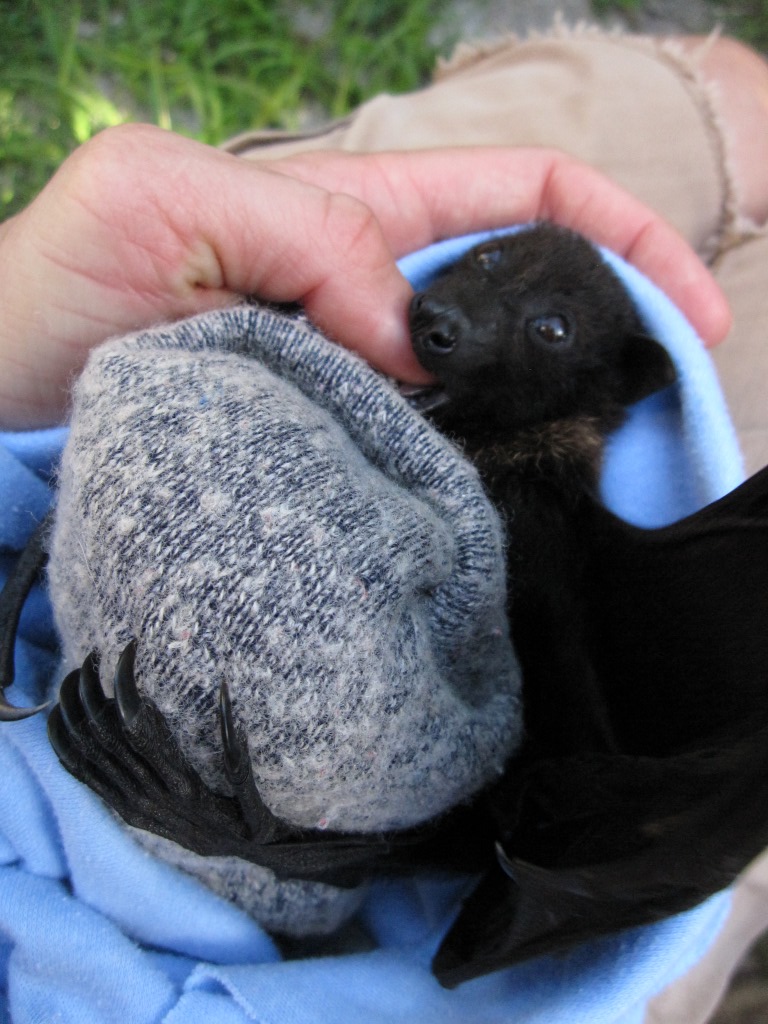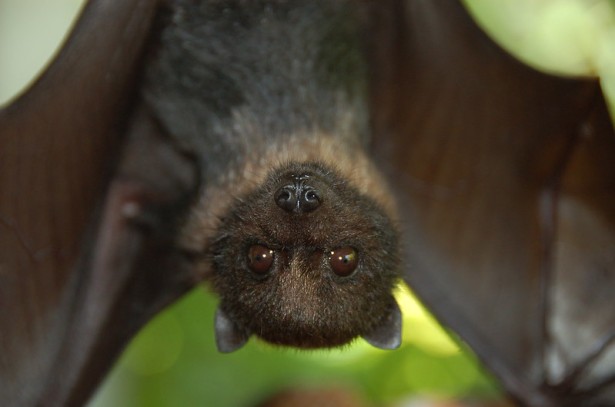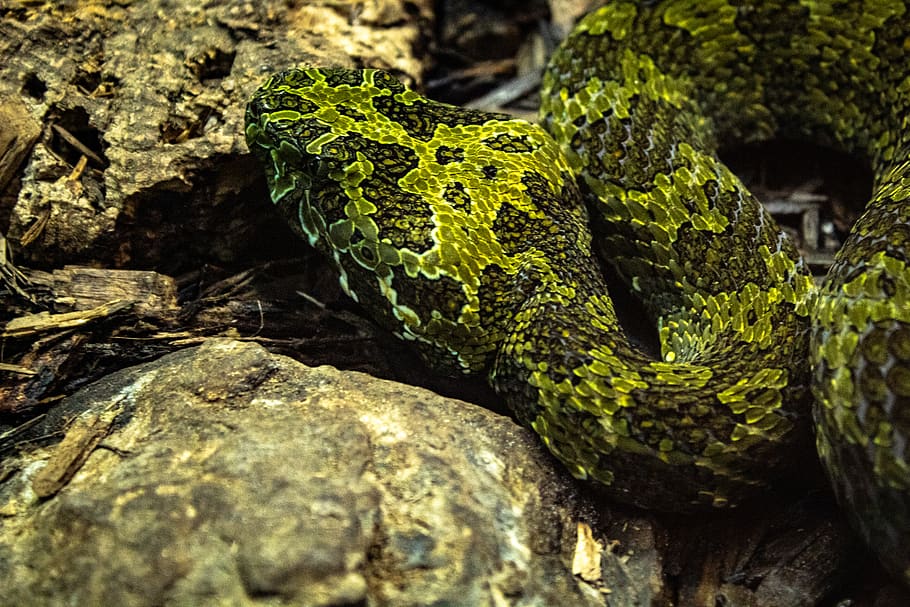This leathery winged, furry bodied creature is not nearly as creepy as a good number of its relatives. In fact, depending on who you talk to (are they afraid of bats?), it’s downright adorable. The Mariana fruit bat (Pteropus mariannus), or Mariana flying fox, is a large, fuzzy, and endangered bat living primarily on Guam in the Pacific Islands. Although mostly nocturnal like the majority of bat species, these fruit bats will also use the day to breed, mark their territories with scent, or groom each other to form and strengthen social bonds. They live in large colonies together in tropical and subtropical forests with sparse undergrowth and relatively taller trees scattered throughout that reach above the main canopy. Roosting mainly takes place in different species of fig, pandanus, coconut, and hibiscus trees.

Mariana fruit bats are quite strikingly colored for a bat, and possess coats of blackish brown fur with silvery streaks and golden-brown or yellow necks and shoulders. Their faces have very canine features, hence the name “flying fox”, with their pointed snouts, slightly rounded ears, and large eyes. Their powerful wings are black and account for the majority of their total size. Wingspans can range from a little over 33 inches to almost 42 inches while the body is less than a foot long at just a bit over eight inches. It is not known for sure how long this particular species of bat lives, but similar species have been recorded to live for about 30 years in captivity.
When a bunch of Mariana fruit bats form colonies together, these colonies are usually made up of many breeding harems consisting of several females (2-15) and a male. Some other groups contain non-breeding bachelor males and there are also often a few lone, non-breeding males near the edges of the colony. There is no specific mating season for these bats and breeding takes place throughout the year. However, female bats will only produce one pup per year and take care of that pup until it can fend for itself. Babies cling their mothers and are carried around until they are too big. When roosting, a mother bat will envelop her baby in her wings to protect it.

Though they lead a relatively sedentary lifestyle and only stay in one specific spot, Mariana fruit bats are strong fliers and can travel long distances to find food. This food is (obviously) fruit, but flowers and leaves will occasionally be chosen as well. Many different fruits are eaten by these bats and preferred fruits include coconut, figs, papayas, cycad seeds, breadfruit, pandanus fruit, and umbrella tree fruit. Bats will normally fly six to seven miles to feeding sites, but will sometimes even go as far as 60 across to other islands. The phrase “blind as a bat” does not apply to these fruit bats, as they navigate and seek out fruit using their excellent vision and keen sense of smell.

Traditionally, and even still today, native Pacific Islanders would kill and eat these bats, considering their meat a delicacy. Thankfully, they are protected as an endangered species now and there are fines and the threat of imprisonment to discourage hunting or poaching of Mariana fruit bats. In addition to legal protection, it has also been found that these fruit bats are major bioaccumulators. They build up toxins in their bodies from the poisonous cycad seeds they eat and from pesticides such as DDT and other toxic chemicals. Eating the meat of the bats can lead to a neuropathological degenerative disease identified as amyotrophic lateral sclerosis-Parkinsonian dementia complex. The long and obnoxious-to-say name reflects the seriousness of a disease such as this. It keeps progressing until it eventually leads to death. This disease comes from the toxins accumulated from the cycad seeds that bats feed on. You’d think this would be enough of a deterrent to keep people from trying to eat the poor creatures, but humans seem to prove themselves over and over again as being notoriously stubborn and nonsensical. Maybe if this continues and more and more people get sick, they will finally stop and the Mariana fruit bats will be safer. You never know.

References:
1. Wilson, Don E., and DeeAnn M. Reeder. “Order Chiroptera.” Mammal Species of the World: A Taxonomic and Geographic Reference. Baltimore: Johns Hopkins UP, 2005. 340. Print.
2. Crichton, Elizabeth G., and Philip H. Krutzsch. “Year-round Harems with Less Stable Female Composition.” Reproductive Biology of Bats. San Diego, CA: Academic, 2000. 334. Print.
3. Pickrell13, John. “Bat-Eating Linked to Neurological Illness.” National Geographic News. National Geographic Society, 13 June 2003. Web. 23 June 2015. <http://news.nationalgeographic.com/news/2003/06/0613_030613_bateaters.html>.
4. “Endangered Species in the Pacific Islands.” Pacific Islands Fish and Wildlife Office. US Fish and Wildlife Service, 20 Sept. 2012. Web. 23 June 2015. <http://www.fws.gov/pacificislands/fauna/marianabat.html>.
Photo Links:
1. http://animal.memozee.com/ArchOLD-4/1128059751.jpg
2. https://c2.staticflickr.com/6/5511/9159953896_b358c98425_b.jpg












